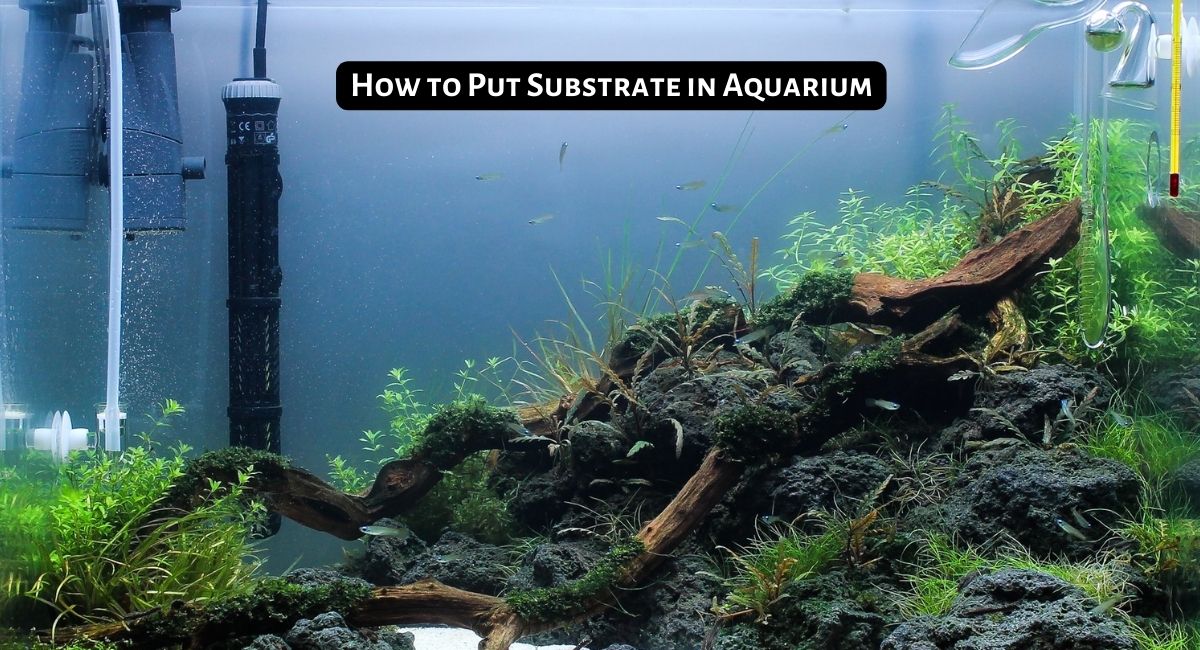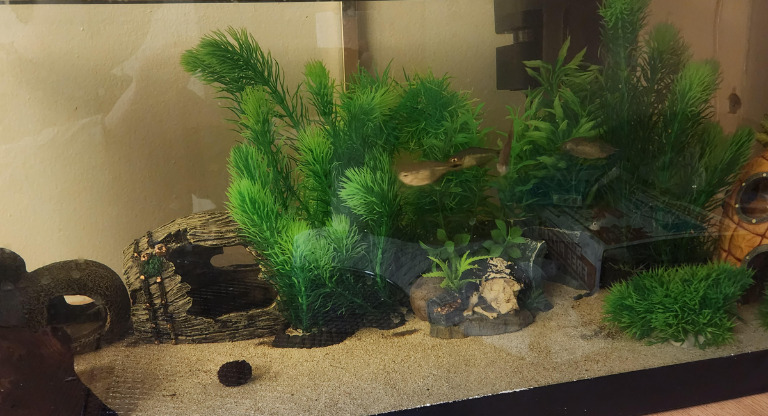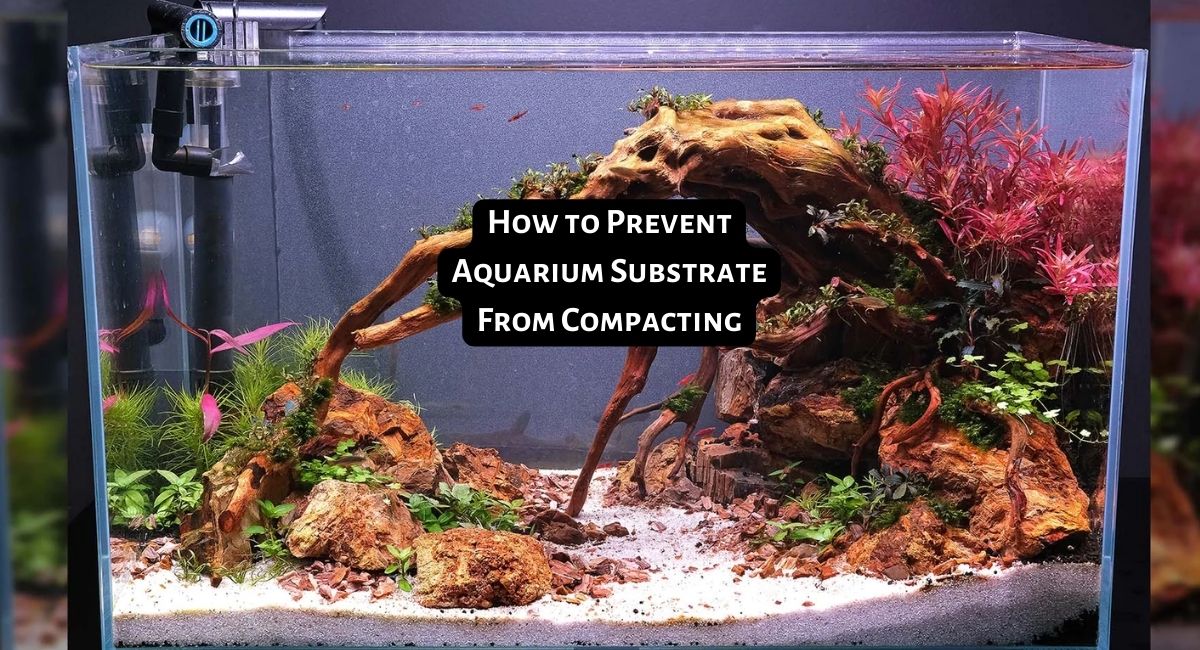Smartplantedaquarium.com participates in affiliate marketing programs. We may earn commissions on purchases made through our affiliate links. This doesn't affect our content or recommendations and we only recommend products we would put in our own tanks.
If you are wondering how to put substrate in aquarium, you are not alone. Amateur aquarists might have to figure this out before starting with anything else. Putting substrate in an aquarium can be a daunting task for many aquarists, but it doesn’t have to be. Substrate can be an important part of any successful aquarium setup and having the right kind of substrate is essential for a healthy environment. In this blog, we will discuss how to put substrate in an aquarium correctly, what type of substrate is best for your tank, and how much substrate to use.
We’ll also explain the importance of preparing the substrate before adding it to the aquarium and what you should do if you’re not happy with the results. With this information in mind, you can be sure that your aquarium will look great with its new substrate!
Contents
How to Put Substrate in Aquarium – Step by Step Guide
Substrate is an essential component of any aquarium setup, providing a foundation for aquatic plants, beneficial bacteria, and other organisms that inhabit the tank. When it comes to putting substrate in your aquarium, there are several steps to follow to ensure that it is properly distributed and maintained over time.
Aquarium Substrate Basics
Firstly, choose the right type of substrate for your aquarium. There are several options to choose from, including sand, gravel, and soil. Consider the needs of your aquatic plants and the type of fish and other inhabitants in your tank when selecting your substrate.
Once you have chosen your substrate, thoroughly rinse it before adding it to your aquarium. This will help remove any dust, debris, or other impurities that may be present in the substrate.
How to Add Substrate to an Aquarium?
Once you have set up your substrate, carefully pour it into your aquarium. Be sure to distribute it evenly, creating a uniform layer across the bottom of the tank. Depending on the depth of your substrate, you may need to add more than one layer to achieve the desired thickness.
After adding the substrate, it’s important to properly maintain it over time. This includes regularly cleaning any debris or waste that accumulates on the surface of the substrate, as well as ensuring that it remains properly aerated to promote healthy bacterial growth.
In addition to providing a foundation for plants and bacteria, substrate can also help create a more visually appealing aquarium. By choosing a substrate that complements the colors and textures of your other aquarium decorations, you can create a beautiful and natural-looking aquatic environment.
The Do’s and Dont’s of Adding Aquarium Substrate
When adding substrate to an aquarium, there are several important do’s and don’ts to keep in mind to ensure that the process goes smoothly and does not harm your fish or other aquatic inhabitants. Here are some of the most important do’s and don’ts to follow when adding substrate to your aquarium:
Do’s:
- Choose the right type of substrate for your aquarium based on the needs of your plants and fish.
- Rinse the substrate thoroughly to remove any dust or debris before adding it to the aquarium.
- Add the substrate gradually to avoid disturbing the water or stressing out your fish.
- Spread the substrate evenly across the bottom of the aquarium to create a uniform layer.
- Consider adding a layer of gravel or sand on top of the substrate to help prevent it from getting stirred up and clouding the water.
- Use a substrate vacuum or siphon to clean the substrate regularly and remove any debris or waste that accumulates.
Dont’s:
- Don’t add too much substrate at once, as this can create an uneven layer and disturb the water chemistry in the aquarium.
- Don’t add substrate while your fish are still in the aquarium, as this can cause them stress and harm.
- Don’t use any chemicals or cleaning agents to clean the substrate, as these can harm your fish and other aquatic inhabitants.
- Don’t add sharp or jagged materials to the substrate, as these can injure your fish or damage their fins.
- Don’t add any type of substrate that can significantly alter the pH or hardness of the water without first testing and adjusting the water chemistry accordingly.
- Don’t forget to properly maintain and clean the substrate over time, as this can lead to a buildup of harmful bacteria and other debris that can harm your fish and other aquatic inhabitants.
By following these do’s and don’ts when adding substrate to your aquarium, you can create a healthy and vibrant aquatic environment that is safe and enjoyable for your fish and other aquatic inhabitants.
In summary, adding substrate to your aquarium is an important step in creating a healthy and visually appealing aquatic environment. By choosing the right type of substrate, properly distributing it, and maintaining it over time, you can ensure that your aquarium remains healthy and vibrant for years to come.
Frequently Asked Questions (FAQs)
How do you add substrates to an aquarium?
To add substrate to an aquarium, you should first choose the appropriate type of substrate for your aquarium’s needs. Once you have the substrate, rinse it thoroughly with water to remove any impurities. Next, add the substrate gradually to the aquarium, creating a uniform layer across the bottom of the tank. Use a substrate vacuum or siphon to clean the substrate regularly, and avoid adding too much substrate at once, which can disturb the water chemistry. Finally, remember to properly maintain and clean the substrate over time to ensure a healthy and vibrant aquatic environment.
What do you put under aquarium substrate?
It is recommended to put an aquarium soil or substrate layer under the substrate. This layer can consist of nutrient-rich substrate or aquarium soil, which can provide beneficial bacteria and nutrients for aquatic plants, helping them to grow and thrive in the aquarium. The layer of soil or substrate can also promote healthy root growth and provide a stable foundation for the substrate layer on top.
Should I wash the substrate before putting it in the aquarium?
Yes, it is recommended to wash the substrate before putting it in the aquarium. Rinsing the substrate helps to remove any dust, debris, or other impurities that may be present, which can help to prevent clouding of the water in the aquarium. Washing the substrate can also help to remove any chemicals or residues that may be harmful to your fish or other aquatic inhabitants. It is important to thoroughly rinse the substrate with clean water before adding it to the aquarium.
Conclusion
In conclusion, adding substrate to your aquarium is a crucial step in creating a healthy and natural environment for your fish and other aquatic inhabitants. With the right type and amount of substrate, you can promote beneficial bacteria growth, provide a stable foundation for plants, and create a more visually appealing aquarium. By following the steps outlined in this guide, you can easily add substrate to your aquarium and ensure that it is properly distributed and maintained over time.
We hope we have answered all your questions around how to put substrate in aquarium. Remember to always choose a substrate that is appropriate for your specific aquarium and follow any additional care instructions to ensure the health and longevity of your aquatic ecosystem.






